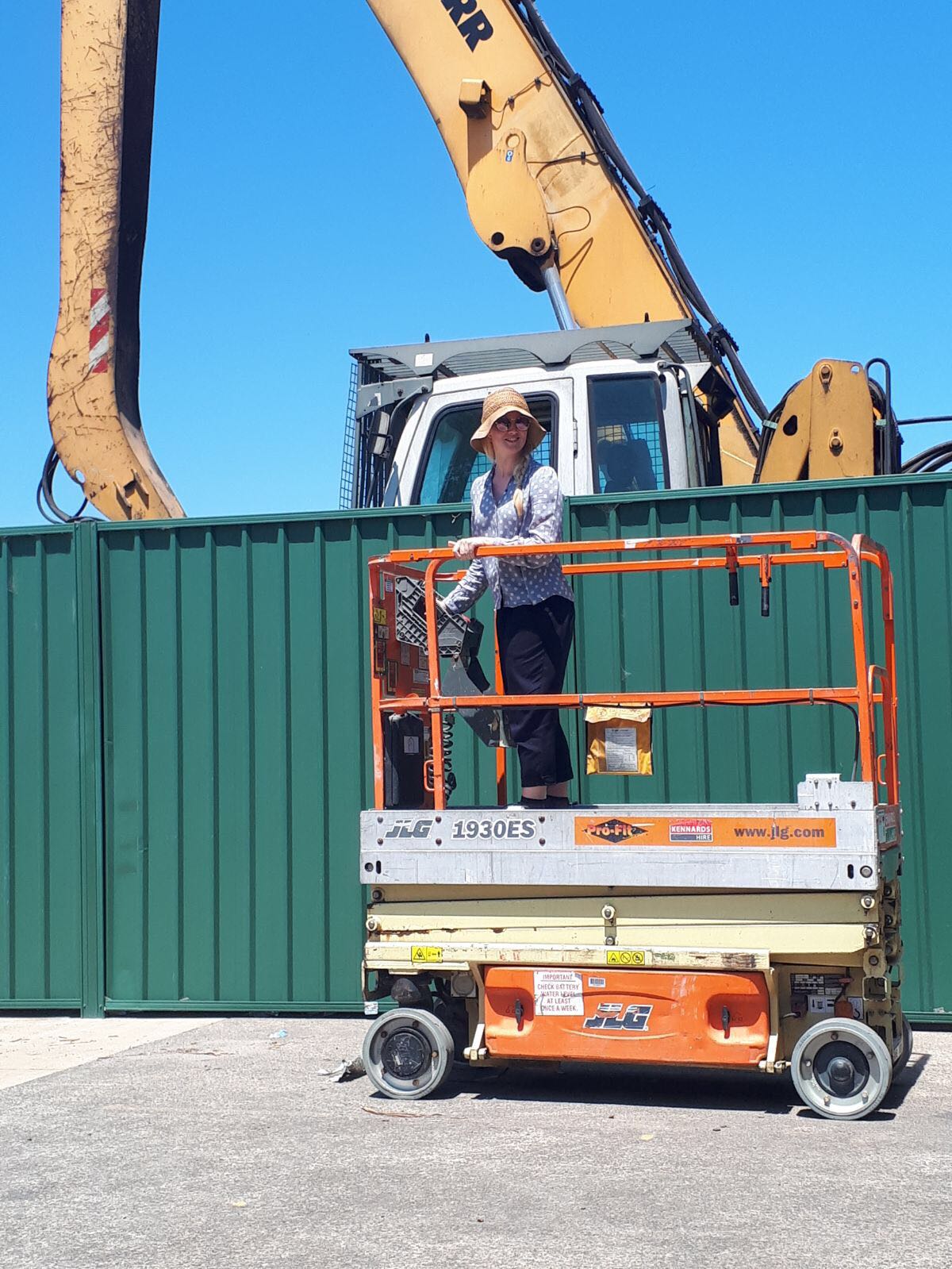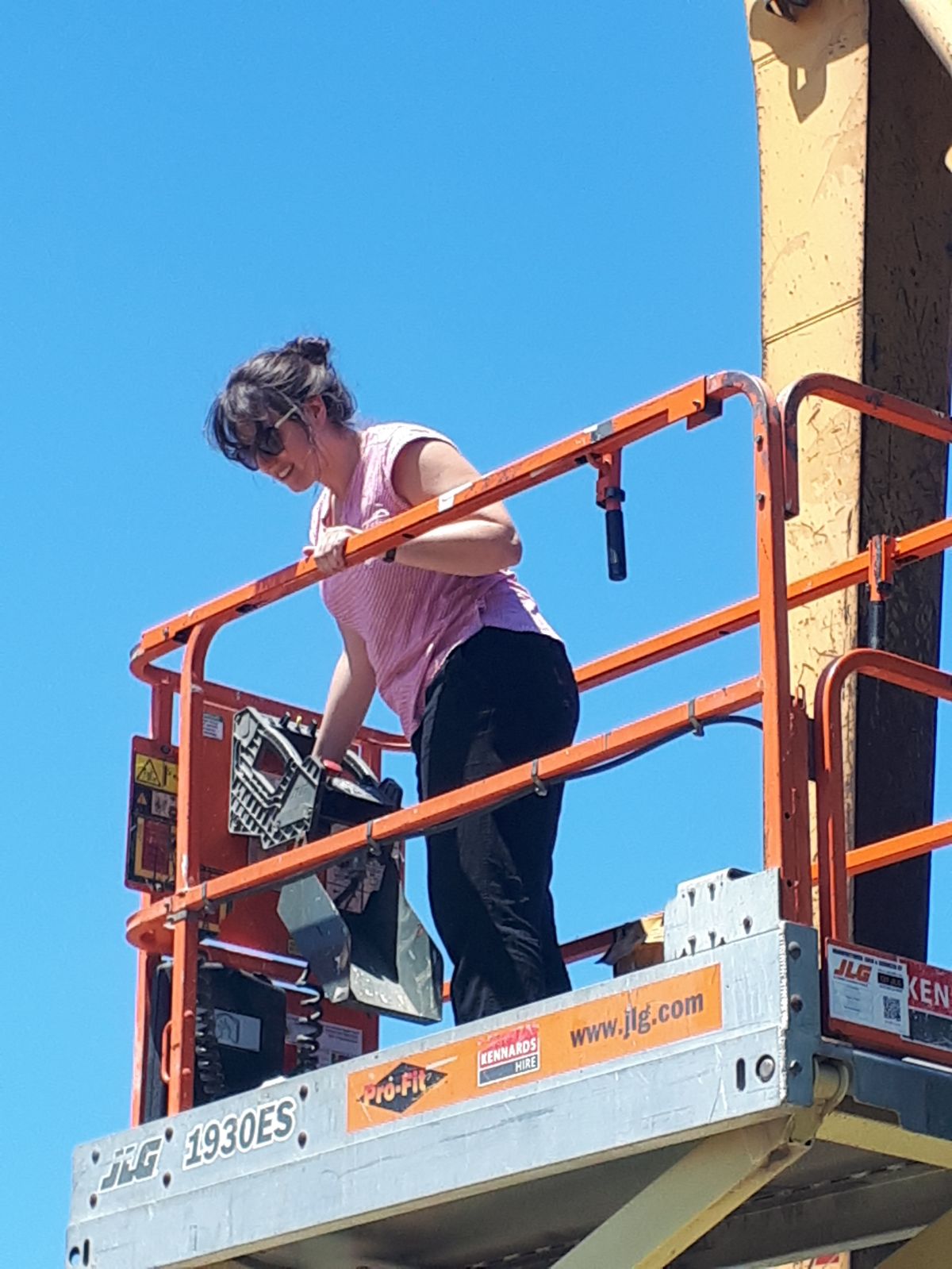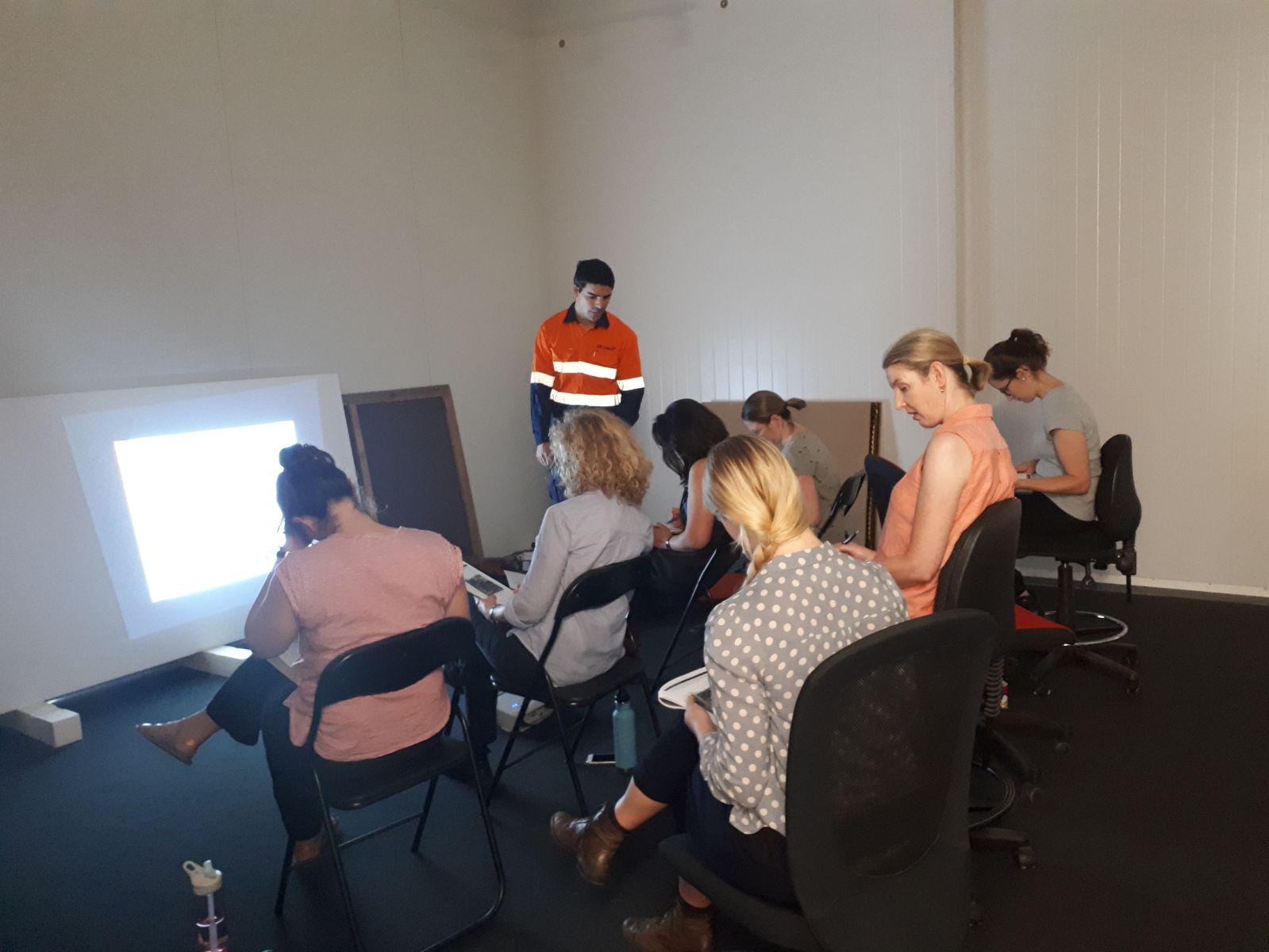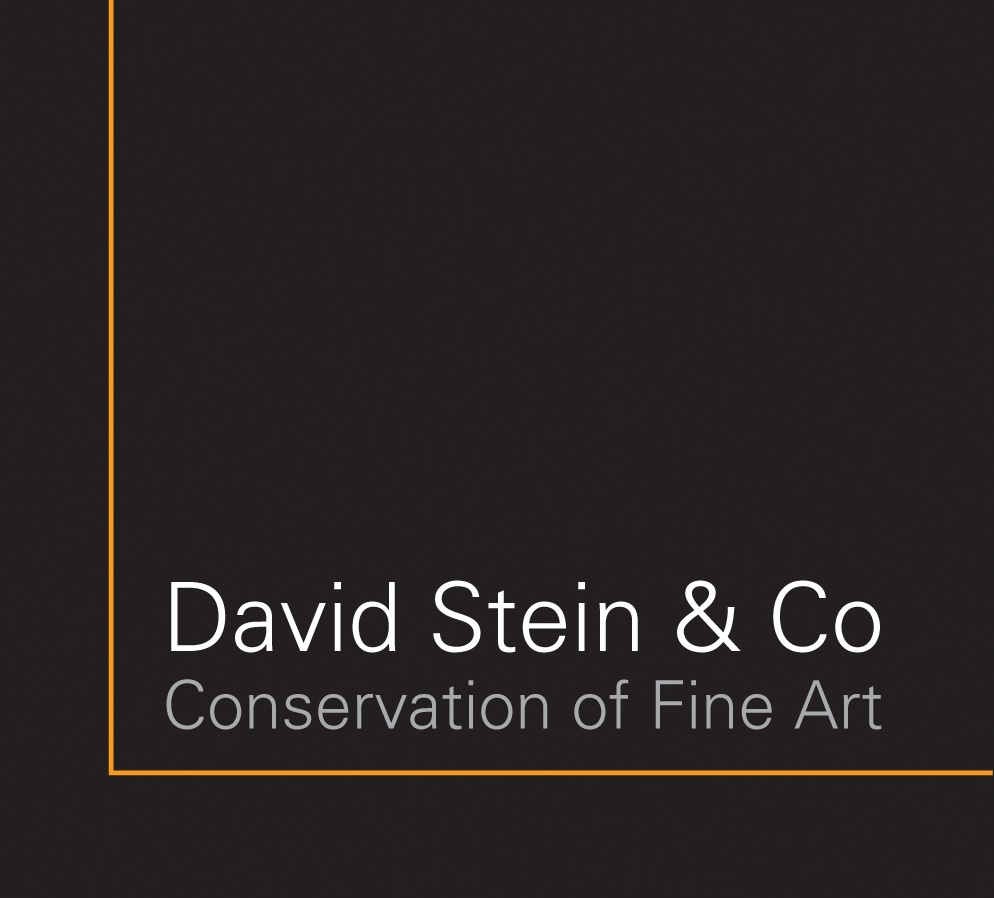The Art and Science of Conservation: David Stein & Co
A film by Simon Hewson for Art Signifikant
Art Signifikant gratefully acknowledges the support of the City of Sydney through the Covid-19 Relief Grants Program for the production of this video to assist with online content development for their art education program.
Stations of the Cross at St Mary's Cathedral
Stations of the Cross at Sydney Mary’s Cathedral
Published by the Catholic Archdiocese of Sydney
https://www.sydneycatholic.org/homilies/2020/ferverino-for-good-friday-stations-of-the-cross/
Behind the scenes: Paintings from the State Library of New South Wales collection
An 1842 portrait of a young woman is rediscovered in the Library’s collection and a significant restoration project gets underway, spearheaded by one of her ancestors.
Watch the story about the painting’s history and it’s conservation by our Senior Paintings conservator and Conservation Manger, Julia Sharp:
Frank Stella's abstract art masterpieces under restoration at Grosvenor Place
In 2017, David Stein and Co undertook the conservation of Frank Stella’s artworks ‘Cones and Pillars’ which grace the lobby of Grosvenor Place in Sydney’s CBD.
Click here for Ali Gripper’s article in the Sydney Morning Herald, including a video clip of the project
Often ignored by passersby, one of the modern art world's major works is undergoing a facelift in downtown Sydney.
By Ali Gripper
September 5, 2017
Cathedral canvases slowly born again
Written by Elizabeth Fortescue, published by The Sunday Telegraph, 14 July 2019
Arresting Gaze
Published in the State Library of NSW Magazine, Winter 2018 pp.46-47.
Julia Sharp, our Conservation Manager, recently completed a sensitive conservation treatment of a 'Portrait of Sophia O'Brien' 1841 by Maurice Felton, for the State Library of NSW.
Happy Holidays
Saving Salvatore Mundi
After treatment.
Leonardo da Vinci
(Italian, 1452-1519)
Salvator Mundi
Oil on panel
Private Collection
© 2011 Salvator Mundi LLC
Photo Credit: Tim Nighswander/Imaging4Art
The recent sale of Leonardo da Vinci’s Salvator Mundi (circa 1500) at auction, for a record $591 million Australian dollars, has generated much debate, to say the very least.
In the weeks since, speculation in the art world on the authenticity of the painting, who and what decides the value of art and even the identity (and psychology) of the millionaire buyer, has mounted.
As a Paintings Conservator, my interest in the story had a slightly different focus. Firstly, I was interested in the physical object itself; the small oil on walnut panel depicting Jesus Christ, his proper right hand raised in blessing while his left holds a crystal orb.
Secondly, I was interested in the conservation treatment of the painting. Conducted over a six year period, the treatment was undoubtedly instrumental in the historic discovery of the true authorship of the painting.
But first, the backstory – prior to the 2017 sale the Salvator Mundi was most recently purchased in 2005 for just $10,000. The painting was bought by art dealer Robert Simon and his colleague Alex Parish on behalf of an art consortium.
Prior to that the painting spent much of the 17th and 18th Century in the collection of King Charles the II. In 1900 the painting was acquired from Sir Charles Robinson for the Cook Collection however at this time it was obscured by heavy restorations and was believed to be a work by Bernardinoi Luini, a follower of da Vinci’s.
In 1958, the painting made its way to Sotheby’s where it was sold for £45 to a private collector from Louisiana.
Fast forward to the 21st Century and after acquiring the painting in 2005 Simon and Parish recognised that it was in need of conservation. Simon told CNBC in an interview that "It appeared to be a damaged, but worthy Renaissance-era work, I thought it was beautiful but battered, and greatly overpainted. In my wildest imagination I would never have thought it was a da Vinci,” he adds. “Perhaps, if we were very, very lucky, it would be attributable to one of his peers.”
Before treatment.
Leonardo da Vinci
(Italian, 1452-1519)
Salvator Mundi
Oil on panel
Private Collection
Photo Credit: Cook Collection, c. 1908-10.
They brought it to Dr. Dianne Modestini, who is an expert in the conservation of Old Master paintings and is Senior Research Fellow and Conservator of the Kress Program in Paintings Conservation at New York University.
After examining the painting, Modestini began testing the most appropriate methodology to remove the overpaint. In the past, well-meaning artists and amateur restorers often “treated” paintings in a way in which the artist’s original materials and vision for the work were compromised. In an attempt to remove discoloured varnishes, too harsh solvents were often used, resulting in loss of original artist transparent glaze layers and paint. Damages to the paint layer were often heaving overpainted, even to the point of covering intact original paint.
Today, conservation is highly professional and specialised discipline, requiring years of graduate and post-graduate study and training as well as sound understanding of both materials science and art history. Conservators working in both private and public sectors adhere to strict professional Codes and Ethics that guide our practice.
Modestini recalls that as she began to remove the layers of overpaint with a solvent blend the painting began to reveal itself as something very special. The quality of the brushwork and the delicacy of the final glazes were such that she began to recognise the quality of the work underneath.
Once the layers of overpaint and discoloured varnish has been removed it was revealed that the walnut panel, originally a single piece, had split into several pieces due to a knot in the wood which as a weak point and the panel being subject to climatic stresses over its lifetime. In the past, maybe even centuries ago, the panel had been inexpertly repaired causing further damage. Monica Griesbach, a specialist in the treatment of panels, was called on to repair the panel, a delicate process that took many months.
As she was cleaning the painting Modestini noted that Christ's blessing hand was almost completely intact, while the curls of his hair, the orb and much of the drapery were in good condition. Of the face, Modestini stated,
“Fortunately, apart from the discrete losses, the flesh tones of the face retain their entire layer structure, including the final scumbles and glazes. The passages have not suffered from abrasion; if they had I wouldn’t have been able to reconstruct the losses.”
Unsurpisingly, however, the 500 year old painting did display some areas of damage to the original paint layer. The most distracting of the losses were minimally inpainted to restore the visual cohesion of da Vinci’s composition. This involved the application of paint only to the areas of loss, using the smallest of brushes. Inpainting is a delicate process that can often be very lengthy and involve complex decision-making in regards to the technique chosen.
We can choose to either simply “tone” the areas of loss in a neutral colour so that they are still visible, or we can use a technique called trattegio or rigatino where the loss is filled with several colours of paint in short brush strokes all in the same direction which at a distance the eye blends the colours and the lines. Or we can use mimetic inpainting, which Modestini used, which mimics the surrounding intact paint, all allows the viewer to appreciate the overall aesthetics of the work without being distracted by damages.
It should be mentioned that the paint used by conservators is always chemically stable and different from the original artist paint so that it remains separate from the matrix of the painting can be identified. The ethics of conservation also state that any materials or processes used are reversible and can be removed in the future.
As Modestini put it in a 2011 interview with CNN, a conservator must consider "what to touch and what to leave alone." She continued that she
“wanted [to be sure] that none of my restorations impinged on the original, that I had not done too much, because old pictures have to look old—if you take out every crack, every spot, every anomaly, they can easily look like a reproduction”.
Conservators hold a very privileged position- we get to work so closely with artworks, examining them from every angle, in different lights, over many, many hours. In doing so, you become intimately aware of the hand of the artist, their application of paint and the ways in which they have constructed their work.
One day, three years into the conservation treatment, Modestini was endeavouring to reconcile the subtle tonal transition in Christ’s damaged upper lip. She turned to a high-resolution photograph of Leonardo’s Mona Lisa and told NYU Alumni Magazine that “I suddenly realized that the Salvator Mundi couldn’t be by any painter other than Leonardo,” she continued, “I had images of the Mona Lisa hanging everywhere, and the similarities were too strong for there to be any other conclusion.”
Detail showing the mouth of Salvator Mundi.
Photo Credit: Tim Nighswander/Imaging4Art.
Concurrent with any painting conservation treatment examination and analysis of the artist's materials and techniques is carried out. In the case of Salvator Mundi, this was no different. However, what was revealed during routine examination and technical analysis contributed to the mounting evidence of the authorship of the painting.
Pigments, binding media and the wooden panel were analysed and found to be consistent with those known to have been used by Leonardo, especially in comparison to the Mona Lisa and St. John the Baptist (both in the Louvre). Interestingly, Modestini also mentioned in her NYU Alumni interview that she believed the Christ figures well-preserved curls were nearly identical to those of the figure in St. John the Baptist.
X-ray and Infra red reflectography also revealed the now famous pentimento (a compositional change made by the artist during the creation of the work) of the thumb of the proper right hand. This pentimento, among various others, became one of the most decisive pieces of evidence pointing to the painting’s authenticity. Over the years 20 copies da Vinci’s Salvator Mundi have been identified and, as Robert Simon told National Geographic, “in all the copies of the painting, [the finger] follows the finished position.”
Mid treatment (2007) photo showing pentimento of the thumb on the proper right hand.
Photo Credit:Josh Nefsky; Marlis Müller
UV analysis of the painting revealed Sploveri (punched drawing) running along the upper line of Christ's top lip, a technique da Vinci was known to use. IRR also revealed that the painter pressed his palm into the wet paint above Jesus’ left eye on his forehead. This technique, known as sfumato, was known to be used by da Vinci in the latter part of his career as a means of achieving soft modelling of shadow and light on the face.
In 2011, Modestini completed the conservation treatment of Salvator Mundi. It was unveiled in the exhibition Leonardo da Vinci: Painter at the Court of Milan at The National Gallery in London. After six years of research, analysis, documentation and conservation the painting was accepted by experts from around the world as being from the hand of Leonard da Vinci.
Of course, we all know what happened when the painting came up for auction at Christie's in New York in last month. The record breaking sale and the only da Vinci in private hands to be added to the small group of the Old Master’s paintings in existence. It’s no secret that often restoration is met with hesitation - what will happen, what’s the point? But if the story of Salvator Mundi has taught us anything, it’s that conservation can help to reveal the true artistic value of an artwork.
Scissor lift training
David Stein and Co conservators extending our skills in the use of scissor lifts. We can now access artworks up to 11m in height!























